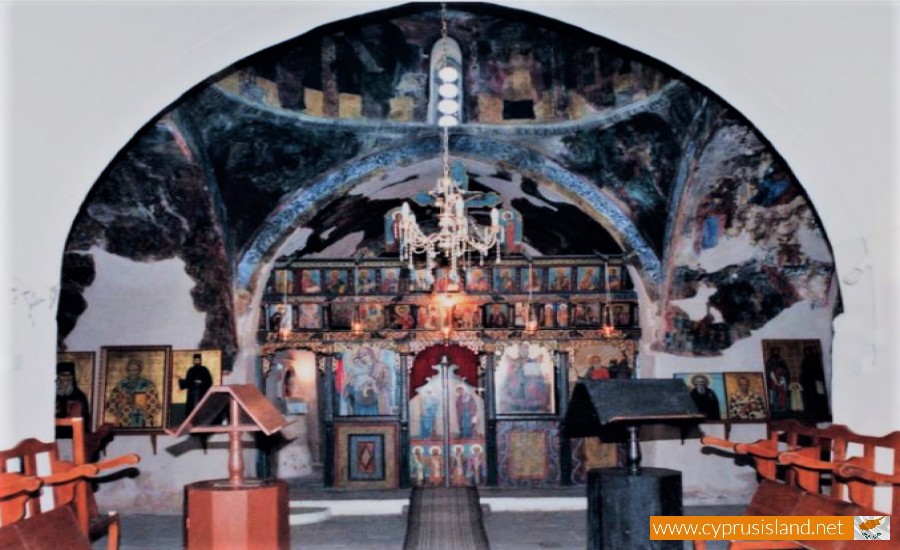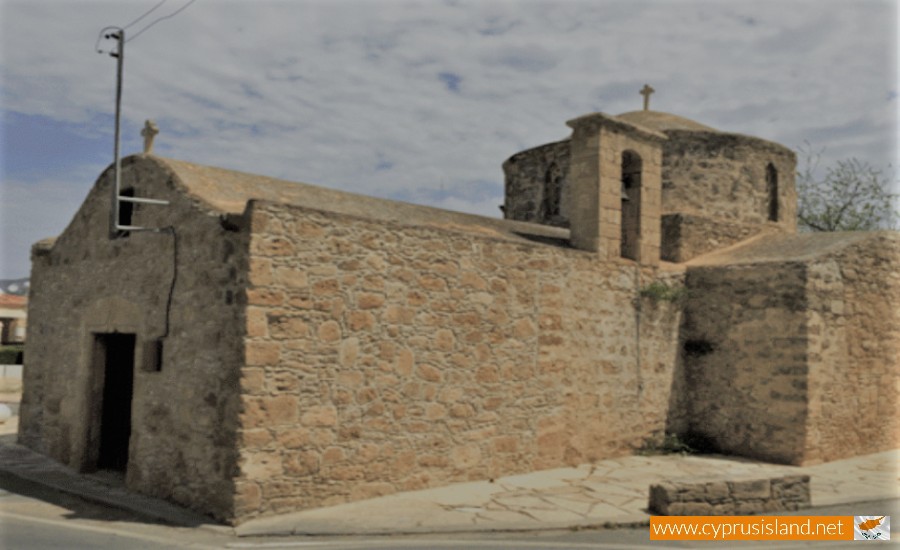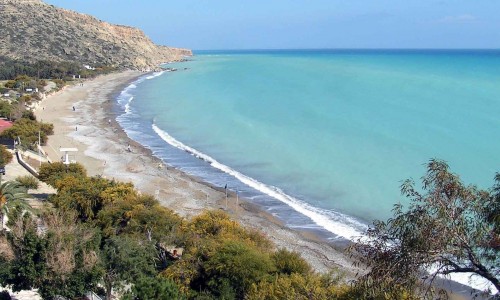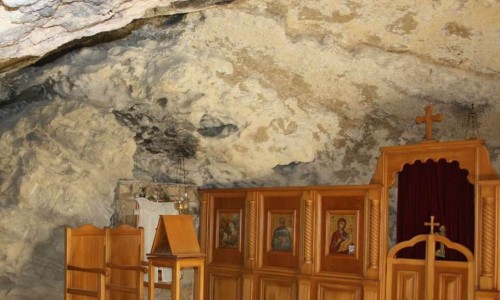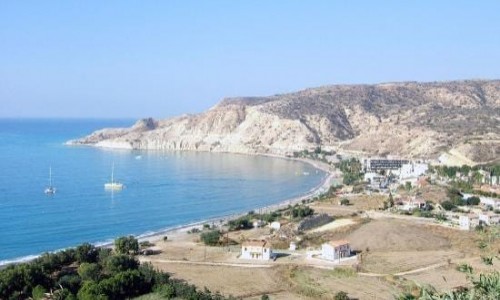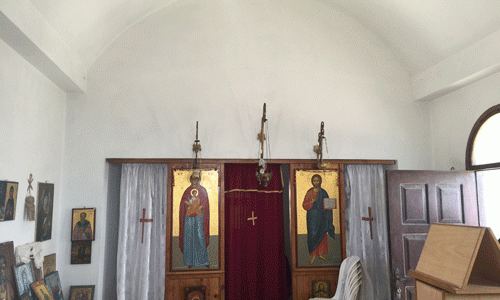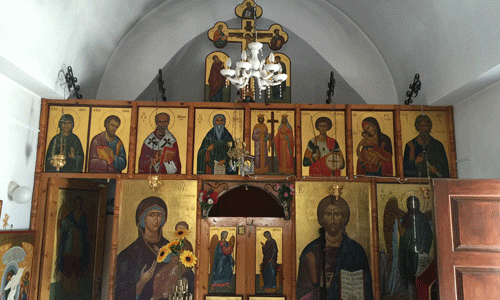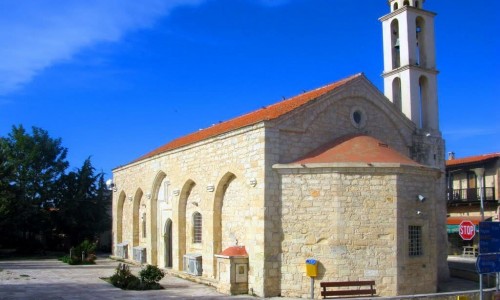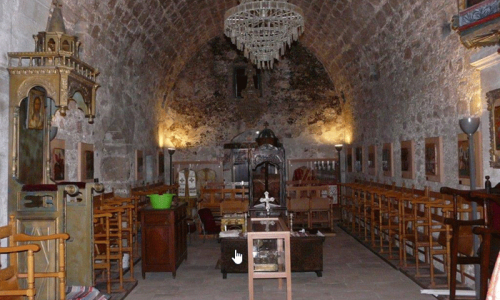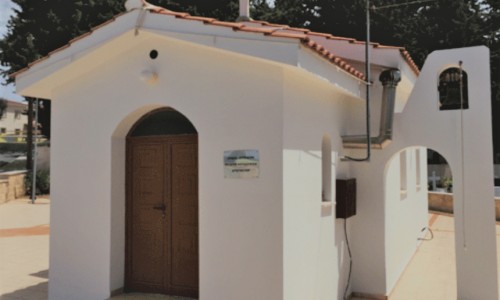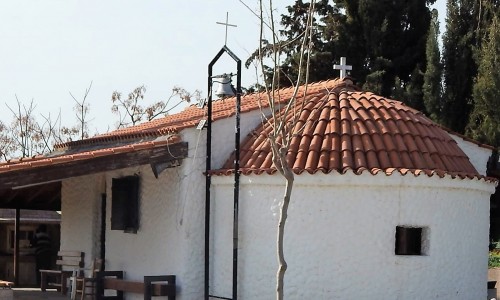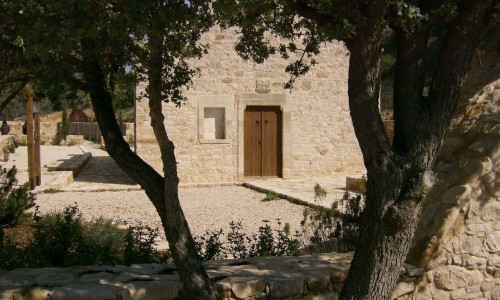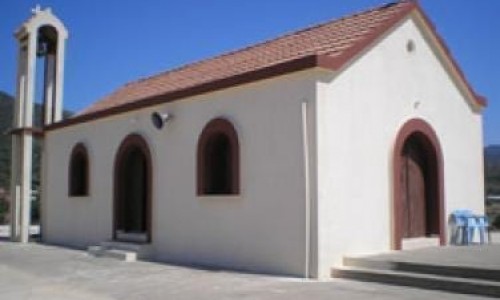Panagia Eleousa Church - Chloraka
Tucked alongside the sunlit lanes of Chloraka village, just a short drive north of Paphos, sits the Church of Panagia Eleousa—a spiritual and cultural touchstone for generations of worshippers. With its elegant stone façade, modest bell tower, and shaded courtyard, the church blends reverence and community, history and everyday life.
The church of Panagia Eleousa operated until 1928, when the Panagia Chrysoematousa Church began operating. The elder people remember a special church area for women, originally separated with wood and later on with a wall. This is how the men and women avoided seeing the altar. The church gallery had a large mural of Archangel Michael. Many areas in the church were changed in order to operate as school rooms.
The Panagia Eleousa Church is visited by many visitors every day, mainly tourists who wish to admire the byzantine architecture. The temple is under the supervision of the Paphos Archaeological Museum. It operates on the 21st of November as well as a few other times a year.
A Legacy Written on Stone and Canvas
Though its current form dates from the early 20th century, Panagia Eleousa’s roots stretch much deeper. Built in a refined Byzantine style, the church is modest in scale yet rich in detail—its simple dome housing layers of artistic expression that span centuries.
Within its cool interior, ancient frescoes from the 13th century share space with later additions. Saints and biblical scenes—from St. George slaying his dragon to the Annunciation—are depicted in warm, human faces and glowing robes. Overhead, a grand image of Christ Pantokrator watches over the nave, flanked by Apostles and angelic figures—each painted with surprising vitality for an intimate rural sanctuary.
Icons That Carry Stories
The wooden iconostasis at the front of the sanctuary holds several portable icons from the 18th century, including those of Panagia Eleousa (Merciful Virgin) and St. John the Theologian. A local tradition tells of how the icon of Eleousa once resisted being moved from its original chapel—even pulling the priest to the ground until it was lifted with care and prayer.
A newer version of the Eleousa icon was installed in 1957, known as the “Red Ribbon” icon. Legend speaks of women who suffered from bleeding: after wrapping a holy ribbon tied to the icon around themselves, they found relief. In gratitude, many still leave ribbons tied beneath the painting today as tokens of their faith and resilience.
The Courtyard Where Memory Lives
Stepping out into the church courtyard, visitors enter a space alive with community and ceremony. The square has hosted village processions, feast-day music, and gatherings of locals under acacia trees. Every November 21—celebrated as the Presentation of the Virgin Mary—the air fills with hymns, candles, and the aroma of incense, drawing worshippers from all over.
Memorial plaques honor the sacrifices of village figures sent off to serve in conflict, and a modest reception hall nearby hosts baptisms, traditional weddings, and cultural events. Beyond the church gates lies the older cemetery, where weathered gravestones provide quiet testimony to generations of families who have shaped the community.
Who Visits Panagia Eleousa—and Why?
This church resonates with visitors who are drawn to:
- Spiritual meaning, icons of mercy, and living faith
- Art lovers, interested in medieval frescoes and folk icon painting
- Pilgrims, especially around the feast day of the Virgin
- History enthusiasts, tracing Venetian, Byzantine, and modern layers
- Visitors craving a contemplative pause, even within a residential community
Its peaceful atmosphere, soft chanting in services, and natural light within marble-floored aisles make it feel like a sanctuary in the flow of everyday Cypriot life.
Tips for Visiting
- Visit early morning or late afternoon to find quiet space and gentle light.
- Dress modestly, out of respect for worship.
- Spend time in the courtyard—sit beneath shaded trees and watch afternoon sun play on stone and pathways.
- Attend on or around November 21 to experience the feast day in full village participation.
- Combine your stop with a stroll to the nearby medieval chapel, dinners at local tavernas, or the scenic coastal walk toward Paphos.
The Panagia Eleousa Church of Chloraka is quiet but deeply resonant—an embodiment of history, art, and devotion woven into a living village life. Here, echoes of faith are carried both in painted frescoes and whispered prayers; memory is honored in ribbons, candles, and the steady flow of community rituals.
Visiting feels like arriving at a point of stillness in time—a place where mercy and presence meet, where stories are held in frescoed walls, and where locals and visitors alike can find a moment of spiritual connection on Cyprus’s western shores.


